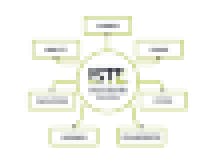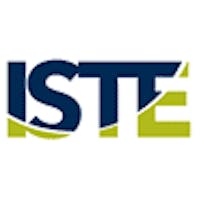We begin 2021 heartened by the resiliency of educators and students from around the country pushing through the disruptions of COVID-19. Even in the face of current challenges, many schools and districts are using this moment to design new approaches that will shape learning far into the future.
For example, Gwinnett County Public Schools designed an online learning system (eCLASS) to support emergency online learning needs. As students move back in the classroom, instead of shuttering their online program, they’ve repurposed it to provide additional approaches for engaging with content and building competencies in the ISTE Standards for Students.
How do we build on this momentum from such districts and many others and propel our systems towards a future of learning that enables all students to grow as lifelong, empowered learners?
To set the foundation for technology-empowered learning during and beyond the pandemic, education leaders are actively tackling internet and device access issues to narrow the digital divide. However, 2020 has also shown us the importance of addressing another foundational gap—support for educators using technology for effective teaching and learning.
Educators tell us that they need more support when it comes to their knowledge of using technology in ways that best accelerate learning. For example, over three-quarters of ISTE members identify online learning practices as their top area of concern. District superintendents have also raised concerns over instructional capacity.
As 2021 kicks off and we set our resolutions for the new year, we pledge our organizations’ continued efforts to respond to educators’ professional learning needs. We further call on state education leaders to also commit to the goal of addressing this critical aspect of digital equity. Championing and sustaining change beyond COVID-19 will require a deeper look at how we are building our educators’ capacities to lead and implement effective learning strategies enabled through technology.
Such efforts must involve establishment of a clear, shared strategic vision for essential educator skills and competencies. The ISTE Standards for Educators provide a roadmap for effective instruction and student empowerment by enabling educators to serve as learners, leaders, citizens, collaborators, designers, facilitators and analysts.

State leadership is crucial to advancing this strategic vision at this unique moment, and their efforts are represented in state reopening and/or remote learning guidance documents from this past fall. Some have established a clear vision around the role of technology, as measured by their support for critical educator skills and competencies grounded in the ISTE Standards for Educators. Much work remains.
ISTE’s analysis shows that all states align to at least some elements of the ISTE Standards and a majority of states have a vision that aligns to the learner, collaborator, designer and analyst standards.

However, the leader, citizen and facilitator standards are missing in many states. In addition, relatively few states are currently planning systemic efforts that will scale effective practices and build support structures to serve districts more equitably in their implementation of learning strategies that empower students through technology.
The results of ISTE’s analysis, as well as interviews with exemplary state and district leaders, are included in a new report, “From Crisis Management to Sustained Change: States Leading the Future of Learning With the ISTE Standards.” The report also features a special foreword from Commissioner of Education Angélica Infante-Green from the Rhode Island Department of Education (RIDE), sharing her 2020 lessons and strides towards the future of learning empowered through technology.

Based on ISTE’s analysis, we provide three core recommendations for establishing and implementing an ambitious state-level agenda for the future of learning:
- Set a shared vision for the future of learning enabled by technology. COVID-19 presents a unique moment for state and local leaders to collaborate with—and generate buy-in among—stakeholders by developing a shared vision and guiding framework for effective, empowering learning practices enabled through technology.
- Build the capacity of educators to lead and implement effective learning strategies enabled by technology. With a shared vision in place, states must invest in preservice programs and professional learning aligned to the ISTE Standards, which ensures all educators develop the skills and knowledge to effectively integrate technology into instruction, rather than technology serving simply as a passive, supplemental medium.
- Develop policies and structures to guide schools and districts equitably and sustainably towards the future of learning enabled through technology. States should fund critical instructional support staff and rethink policies around instructional time and assessments to ensure that all educators are prepared and supported to design and lead effective learning strategies with technology.
Early data is already pointing towards learning losses from 2020 that could widen further this year, especially among students from historically disadvantaged communities.
What will you commit to this year in the face of COVID-19 to provide equitable learning opportunities accelerated through the effective use of technology?



